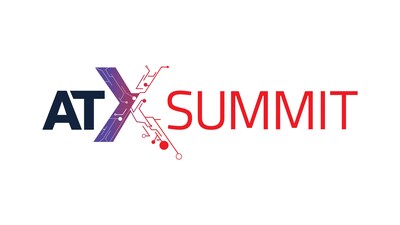Press Release
Artmarket.com: France obtains the maintenance of VAT at the reduced rate of 5.5% on the Art Market, a major victory with very considerable advantages according to Artprice.

[ad_1]
PARIS, Sept. 25, 2023 /PRNewswire/ — France’s art market professionals will be extremely relieved by this news. The French government has decided to maintain the VAT rate at 5.5% for initial sales and imports of artworks from countries outside the European Union, proof that the two French Ministers, (Rima Abdul Malak for culture and Bruno Le Maire for the economy) succeeded in making their case against strong headwinds from Brussels.

Photo – https://mma.prnewswire.com/media/2219463/Artmarket_1.jpg
If they had failed, there was a high risk that VAT would be raised to 20% before 1 January 2025, which would undoubtedly have broken the dynamics of the French art market, now the fourth largest national art market in the world according to Artprice.com by Artmarket.
Over recent years France has been accumulating a number of very positive signals for the re-emergence of its art market. These include the presence of large private foundations such as the Fondation Louis Vuitton and the Pinault Collection, the replacement of the FIAC with Paris+ (organized by Art Basel), the arrival and/or expansion of major international galleries such as the Gagosian, Zwirner, Skarstedt, Max Hetzler, Thaddaeus Ropac, Continua, Marian Goodman, and Bonhams’ recent acquisition of the French auction house Cornette de Saint Cyr, not to mention the rise of the two major global auction houses, Christie’s and Sotheby’s, both owned by French business tycoons (François Pinault and Patrick Drahi respectively), and, the successful transformation of Drouot, and Arcurial (Dassault family), France’s leading auction house in terms of turnover which now ranks 14th among the world’s top 20 auction houses.
Since Brexit, the French art market has been the main beneficiary being the main gateway to the European Union.
A VAT rate hike to 20% would have a negative impact not just on artists, antique dealers, art dealers, and auction houses, but also on the entire art market ecosystem which includes tens of thousands of people employed in related fields ranging from frame-building to journalism, from restoration to transport, from logistics to security and from tourism to insurance.
In March 2023 the Parisian gallery owner Kamel Mennour told the Le Monde newspaper (interview by Harry Bellet) “If the increase makes it difficult for me to sell their works, I will obviously be less inclined to sign new artists“. Now that the VAT has been maintained at 5.5%, Kamel Mennour can breathe a sigh of relief…
Artprice.com by Artmarket congratulates the government’s decision.
VAT at 20% would have harmed the art market in France as a whole, and, as a result, would have damaged the confidence and dynamism of Artprice.com by Artmarket’s French clientele. Incidentally – as the World Leader in Art Market Information for more than 25 years – Artprice notes that its French clients, who represented less than 5% of their total clientele a few years ago, now represent more than 10% (see Artmarket.com’s universal reference document registered with the AMF, France’s Financial Markets Authority), showing that French collector participation has doubled.
The reduced VAT rate of 5.5% will therefore continue to apply as of 2025 to initial sales as well as to imports of artworks from outside the EU. The rate will apply to the total price and not just to the margin, which will penalize low-margin sales very slightly.
“A VAT rate at 20% would, for example, prevents the return to our country of Impressionist paintings or even masterpieces of Modern art by the likes of Picasso, Matisse and Manet, which are no longer in France although they were created in France and are adored by French collectors. Art is not a common consumer good: a State is enriched by its imports as well as the production of its ‘home-grown’ artists. Inversely, the departure en masse of its national treasures has an impoverishing impact on the State that loses them.” This idea was expressed with courage by journalist Martine Robert who became the ‘whistleblower’ for this cause for the French economics newspaper Les Échos in February 2023.
thierry Ehrmann – founder of Artprice and CEO of Artmarket.com and himself a sculptor (see his biography in Who’s Who In France) – made the following observation: “This decision by the government will ensure that the dynamism of the French Art Market is not disrupted. We can only rejoice at this courageous decision by our Ministers Rima Abdul Malak and Bruno Le Maire. Artprice.com by Artmarket has worked for more than 25 years with all the players in the French art market, and it knows how much the VAT rate can impact the good performance of the art market. As a sculptor, I have been passionately following artistic creation in France for 40 years, and it is once again resonating around the world. This move will give substantial reassurance to French artists.”
Faced with an increasingly globalized art market, France remains a strong and competitive market.
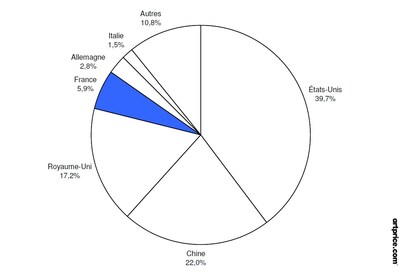
Infographic – https://mma.prnewswire.com/media/2219464/Artmarket_2_Infographic.jpg
France’s place in the global and European art market
In the first half of 2023, French auction houses sold 54,000 fine art lots, generating a total turnover of $384.3 million. Artprice.com‘s econometrics department has calculated that France therefore accounts for 5.9% of the overall value of global art auction sales, (giving it 4th place in the world) and 50% of the European art market. And it is creeping ever closer to the Top 3 podium.
Several other European Union countries also play significant roles in the global art market, albeit on smaller scales: Germany (2.8% of global art auction turnover), Italy (1.5 %), Switzerland (1.3%), Austria (0.8%), Poland (0.6%), Belgium (0.6%). Much less centralized than France, the German market is the strongest neighboring country, and Sotheby’s has recently launched new sales sessions in Cologne. Read Artprice by Artmarket reports on the art market: https://www.artprice.com/artprice-reports/the-art-market-in-2022
Competition with the United Kingdom
Despite Brexit, the United Kingdom still accounts for 17% of global art auction turnover with 5% VAT. The competition between London and Paris is particularly palpable every year in October.
In a few weeks, Frieze London and Paris+ by Art Basel will take place in short succession. For the first time ever, the latter will be hunting on an equal footing with the Frieze, thanks to the power of Art Basel. In all, October is an intense period with the most prestigious galleries deciding whether or not to make the trip across the Channel. It is also a key time with auction houses hosting major sales and several organizations choosing to make major announcements to the world press. The Marcel Duchamp prize, for example, is awarded every October by the ADIAF (of which Artprice.com by Artmarket is a patron) to an artist from the French art scene at the Pompidou Center in Paris.
According to Artprice.com‘s econometrics department, in 1960, France’s share of the global art market was 62%. The old stock market adage “a price once attained always comes back sooner or later,” also works in economics…
More than 23 years ago, when Artprice definitively became the World Leader in Art Market Information following the spectacular and unexpected acquisition of the American leader Sound View Press NY, there was a widely held belief in financial and economic circles that Artprice’s head office would inevitably migrate to its New York offices. The decision to stay in France was indeed a daring one. Today, France can rest assured that the World Leader in Art Market Information, Artprice.com by Artmarket, will remain in France.
Images: [https://imgpublic.artprice.com/img/wp/sites/11/2023/09/image1-Rima-Abdul-Malak-Culture-Bruno-Lemaire-Economy-Finance.jpg] [https://imgpublic.artprice.com/img/wp/sites/11/2023/09/image2-geographical-distribution-fine-art-auction-turnover-H1-2023.png]
Copyright 1987-2023 thierry Ehrmann www.artprice.com – www.artmarket.com
- Don’t hesitate to contact our Econometrics Department for your requirements regarding statistics and personalized studies: [email protected]
- Try our services (free demo): https://www.artprice.com/demo
- Subscribe to our services: https://www.artprice.com/subscription
Artmarket.com is listed on Eurolist by Euronext Paris, SRD long only and Euroclear: 7478 – Bloomberg: PRC – Reuters: ARTF.
Discover Artmarket and its Artprice department on video: www.artprice.com/video
Artmarket and its Artprice department was founded in 1997 by its CEO, thierry Ehrmann. Artmarket and its Artprice department is controlled by Groupe Serveur, created in 1987.
See certified biography in Who’s who ©:
https://imgpublic.artprice.com/img/wp/sites/11/2023/04/2023_2_Biographie-thierry-Ehrmann_WhosWhoInFrance.pdf
Artmarket is a global player in the Art Market with, among other structures, its Artprice department, world leader in the accumulation, management and exploitation of historical and current art market information in databanks containing over 30 million indices and auction results, covering more than 817,000 artists.
Artprice by Artmarket, the world leader in information on the art market, has set itself the ambition through its Global Standardized Marketplace to be the world’s leading Fine Art NFT platform.
Artprice Images® allows unlimited access to the largest Art Market image bank in the world: no less than 180 million digital images of photographs or engraved reproductions of artworks from 1700 to the present day, commented by our art historians.
Artmarket with its Artprice department accumulates data on a permanent basis from 7200 Auction Houses and produces key Art Market information for the main press and media agencies (7,200 publications). Its 7.2 million (‘members log in’+social media) users have access to ads posted by other members, a network that today represents the leading Global Standardized Marketplace® to buy and sell artworks at a fixed or bid price (auctions regulated by paragraphs 2 and 3 of Article L 321.3 of France’s Commercial Code).
Artmarket, with its Artprice department, has twice been awarded the State label “Innovative Company” by the Public Investment Bank (BPI), which has supported the company in its project to consolidate its position as a global player in the art market.
Artprice by Artmarket’s Global Art Market Report, “The Art Market in 2022”, published in March 2023:
https://www.artprice.com/artprice-reports/the-art-market-in-2022
Artprice releases its 2022 Ultra-Contemporary Art Market Report:
https://www.artprice.com/artprice-reports/the-contemporary-art-market-report-2022
Index of press releases posted by Artmarket with its Artprice department:
https://serveur.serveur.com/artmarket/press-release/en/
Follow all the Art Market news in real time with Artmarket and its Artprice department on Facebook and Twitter:
www.facebook.com/artpricedotcom/ (over 6.3 million followers)
Discover the alchemy and universe of Artmarket and its artprice department https://www.artprice.com/video headquartered at the famous Organe Contemporary Art Museum “The Abode of Chaos” (dixit The New York Times): https://issuu.com/demeureduchaos/docs/demeureduchaos-abodeofchaos-opus-ix-1999-2013
La Demeure du Chaos / Abode of Chaos
GESAMTKUNSTWERK & SINGULAR ACRHITECTURE
Confidential bilingual work now public:
https://ftp1.serveur.com/abodeofchaos_singular_architecture.pdf
- L’Obs – The Museum of the Future: https://youtu.be/29LXBPJrs-o
- www.facebook.com/la.demeure.du.chaos.theabodeofchaos999 (over 4 million followers)
- https://vimeo.com/124643720
Contact Artmarket.com and its Artprice department – Contact: Thierry Ehrmann, [email protected]
Logo – https://mma.prnewswire.com/media/1009603/Art_Market_logo.jpg


[ad_2]
Source link
Press Release
New Study Reveals Majority of Indians Prioritize Nutrition Over Taste, Surpassing Global Average
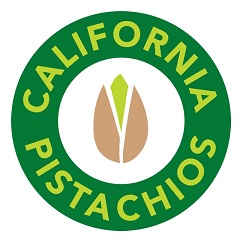
[ad_1]
Based on a recent survey of urban Indian consumers:
-
Nine out of 10 consumers are searching for protein-rich food compared to seven out of 10 global shoppers. -
The top four qualities consumers look for when buying snacks are (1) natural, (2) heart-healthy, (3) protein-rich and (4) energy-source, all of which come before satisfying cravings. -
Nuts have emerged as one of the most popular snacking choices, with 86% of Indian shoppers report having purchased them in a span of 6 months. -
Urban Indians read nutrition labels more than the global average, reflecting a growing trend towards informed purchasing. -
69% of urban dwellers surveyed have the opinion that plant-based protein is just as good as meat-based protein, exceeding the global average of 55%.
Wonderful Pistachios, the world’s largest grower and processor of pistachios and distributor of California Pistachios in India, released today, World Nutrition Day, the findings of a new global study that sheds light on the snacking habits of urban Indians. The study, commissioned with Material, a leading global research consultancy, included 10 countries and over 12,400 respondents, revealed a new behavioural trend that urban Indian consumers prioritize nutrition over taste when it comes to snacking. This growing preference for healthy snacking emphasizes the importance of good nutrition for overall well-being.
For the India market specifically, the study delved into the snacking habits of 2,415 shoppers across six Indian cities, which represented a population of approximately 35.9 million consumers. Remarkably, a majority of urban Indians (58%) reported basing their food purchasing decisions on nutritional benefits more than taste, exceeding the global average of 52%. Delhi and Ahmedabad lead with over 60% of urban shoppers preferring nutrition in their food. Bengaluru and Chennai follow closely, indicating a nationwide shift towards smarter snacking preferences. In India, Millennials and Gen Z are leading the charge in health-conscious purchasing decisions, with more than 83% of consumers in these age groups reading nutritional labels before buying.
Indian consumers prioritize four key factors when shopping for nutritional snacks: natural (free of artificial colours and preservatives), heart-healthy, protein-rich, and provides energy. Nine out of 10 urban shoppers consciously seek protein-rich food options, compared to the global average of seven out of 10. The focus on nutrition has fueled the rise of nuts as a preferred snack choice, becoming essential to daily eating habits. The study found a staggering consumption of nuts, with 86% of Indian shoppers report purchasing them in a span of 6 months, compared to just 75% globally. With 6g of protein in per 28g serving, California Pistachios are a smart snack choice that provides benefits without sacrificing taste.
Shail Pancholi, Country Director, India, Wonderful Pistachios, commented on the study, saying, “Nuts were traditionally used as garnishes and consumed during festivals, but have now become a popular snack in India, indicating a notable shift in dietary habits. Pistachio consumption in India has doubled in the last six years, as consumer awareness of the nutritional benefits that pistachios offer has grown. Consumers are discovering that pistachios are naturally cholesterol-free, rich in plant-based protein and dietary fiber, and provide over 30 different vitamins and minerals.”
Interestingly, the study found that nuts are the second most preferred snack among urban Indian consumers, with 64% of Baby Boomers and 59% of Gen Z prioritizing nutrition over taste when selecting food. This indicates a growing focus on health across generations, with Baby Boomers focusing on senior wellness and Gen Z reflecting the rise of mindful purchasing. Though on opposite ends of the age spectrum, these two generations take the lead in seeking protein-rich options, as well as preferring natural snacks.
Mumbai tops most of the consideration sets when choosing a snack. Residents opt for natural ingredients (35% vs. the national average of 30%), heart-healthy options (33% vs. 30%), and protein (33% vs. 29%). Chennai residents look for energy-boosting snacks (31% vs. the national average of 29%).
The fact that 69% of urban Indians surveyed have the opinion that that plant-based protein is just as good as meat-based protein reflects a positive shift towards varied dietary preferences. Pistachios are a good source of high-quality complete protein, containing all nine essential amino acids. A 28g serving of pistachios provides 6g of protein, which is 11% of the recommended daily allowance (RDA) according to FSSAI.
The Wonderful Pistachios study unveils a compelling shift in Indian snacking habits. Nuts are evolving from festive treats to a daily snacking staple, fueled by a nationwide preference for more nutritious options. The trend transcends generations, resonating with Gen Z and Baby Boomers alike, underscoring the growing importance of mindful eating in urban India. As consumers increasingly seek natural, heart-healthy, protein-rich, and energy-boosting snacks, the future of Indian snacking appears to be firmly rooted in nutrition and well-being.
Wonderful Pistachios
Wonderful® Pistachios is the world’s largest grower and processor of pistachios, with a global presence in over 70 countries. As a vertically integrated operation, they are experts in every step of the process from tree to shelf, ensuring the highest-quality product every time. In tandem with its Grower Partners, Wonderful Pistachios harvests 125,000 sunny acres (50,000 hectares) of land in California that receive warm days and cool nights, which work in harmony with the rich, natural soils to create the perfect growing climate for high-quality pistachios. They ship 600 million pounds (204 million kg) of nuts worldwide from their advanced processing facilities to ensure the highest standards are met. When it comes to pistachios, Wonderful® Pistachios expertise is unmatched in scale and capacity, paired with warehouses and sales teams worldwide that are well-equipped to provide support at every step of the way.
California Pistachios
California Pistachios are grown and distributed by The Wonderful Company, the world’s largest vertically integrated pistachio processor and marketer located in California’s Central Valley. California Pistachios are Non-GMO, providing a smart, healthy choice for consumers around the world. Sun-ripened in the moderate Mediterranean climate of California, these distinctively green nuts pack taste and contain antioxidants and over 30 different nutrients. California Pistachios in India are available under leading brands and private labels at retail outlets, grocery stores, and online platforms.
For more information about California Pistachios India, please visit www.b2b.wonderfulpistachios.com
[ad_2]
Source link
Press Release
Singapore Prepares Ahead to Leverage Artificial Intelligence for a Better Future
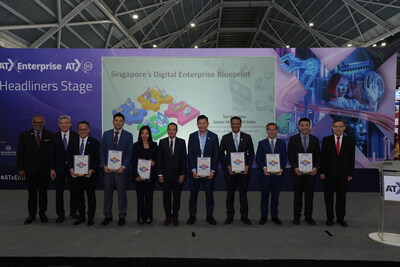
[ad_1]
SINGAPORE, May 31, 2024 /PRNewswire/ — Senior Minister of State for Communications and Information Tan Kiat How launched the Digital Enterprise Blueprint (DEB) at Asia Tech x Singapore (ATxSG) 2024 today. The Blueprint will enable SMEs to harness technology, optimise the way they work, and strengthen digital resilience and cybersecurity across the ecosystem. 50,000 SMEs are expected to benefit over the next five years through four key focus areas:
- Empower enterprises to be smarter by adopting AI-enabled solutions
- Enable enterprises to scale faster through cloud-based and integrated solutions
- Equip enterprises to be safer through improved cyber resilience
- Support enterprises to upskill workers to make full use of digital capabilities
Seven partners have come onboard to pledge their commitment, including Singapore Business Federation, Singapore Computer Society, SGTech, Amazon Web Services, Google, Microsoft and Salesforce.
In collaboration with IMDA and the TechSkills Accelerator for ITE and Polytechnics Alliance, SGTech is launching the Tech Apprenticeship Programme to expand the career pathways of graduates by providing access to industry apprenticeships that offer on-the-job training and development opportunities. Over the next two and a half years, SGTech aims to facilitate the placement of at least 300 apprentices who are fresh or mid-career professionals from polytechnic or ITE backgrounds, and drive the adoption of similar practices that promote more inclusive hiring and career agility.
IMDA and the Singapore Academy of Law (SAL) signed an MoU aimed at uplifting the legal sector’s productivity through the use of GenAI. As part of this partnership, GPT-Legal, a new large language model which is contextualised for Singapore’s legal sector, will be co-developed. The model will be integrated into SAL’s research platform LawNet, which is accessible by 75% of Singapore’s lawyers. SAL will also be penning an MoU with the National University of Singapore and AI Singapore to develop its AI capabilities and create a certification to recognise AI specialists in the legal profession.
Additionally, Tribe and Digital Industry Singapore announced a collaboration with NVIDIA to launch the Ignition AI Accelerator for AI startups to create and bring to market the next wave of advancement in AI solutions. This programme will nurture 15 high-potential startups, equipping them with well-rounded support covering business and technical needs. NVIDIA and Tribe will also collaborate with EnterpriseSG to offer qualified AI startups funding support through the Startup SG Tech scheme, and assist them through the IMDA Accreditation process.
Singapore hosted the final meeting of the UN Secretary-General’s Artificial Intelligence Advisory Body (AIAB) from 28-29 May. As part of the agenda, Singapore facilitated an engagement session between AIAB and the Digital Forum of Small States (Digital FOSS). Digital FOSS Fellows exchanged views with AIAB members on the topic of AI governance, particularly on the implications and challenges faced by small states. Through such efforts, Singapore aims to promote a more inclusive approach towards shaping global AI and digital governance.
Contact:
[email protected]
![]() View original content to download multimedia:https://www.prnewswire.com/in/news-releases/singapore-prepares-ahead-to-leverage-artificial-intelligence-for-a-better-future-302160193.html
View original content to download multimedia:https://www.prnewswire.com/in/news-releases/singapore-prepares-ahead-to-leverage-artificial-intelligence-for-a-better-future-302160193.html

[ad_2]
Source link
Press Release
One in Six Globally Concerned About Colorectal Cancer Screening Costs
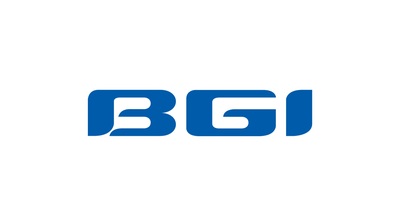
[ad_1]
SHENZHEN, China, May 31, 2024 /PRNewswire/ — By 2040, the burden of colorectal cancer (CRC) is projected to increase to 3.2 million new cases and 1.6 million deaths per year representing a 66% and 71% rise in new cases and deaths respectively relative to 2020.

To better address the global burden of CRC and reduce its impact, BGI Genomics has launched the second edition of its global CRC awareness report, covering 1,938 respondents from Brazil (306), China (367), Poland (300), Saudi Arabia (300), Thailand (362), and Uruguay (303):
CRC Screening Gaps Vary Globally: Nearly half (49.3%) of global respondents have never undergone CRC screening, with the highest proportions in Saudi Arabia (62.0%) and Poland (61.0%).
Preference for Fecal Testing Over Colonoscopy: Although colonoscopies are more recognized (33.4%), fecal tests at healthcare facilities are preferred (31.8%), reflecting a trend towards non-invasive methods.
Cost and Fear are Determinants of Screening Choice: Fear of colonoscopy (18.2%) and screening costs (17.7%) are major barriers to CRC screening. Poland (24.7%) and Uruguay (21.0%) show the highest fear of colonoscopy, while Thailand (24.5%) and Brazil (20%) indicate the most concern about costs.
Medical Advice and Family History Drive CRC Screening: Doctor’s recommendations are a major driver for CRC screening (30.5% globally), with Uruguay showing the highest adherence (44.1%). Additionally, those with a family history of CRC are more proactive in screening (64.5%), compared to the general population (35.0%).
Prof. Varut Lohsiriwat from Mahidol University offers his insights to this report. He suggested: “The essence of effective cancer screening lies in the acceptance and adherence of the patient to the screening method. The best screening method is the one that the patient accepts and adheres to because that’s the method that will actually benefit them.”
Dr. Zhu Shida, BGI Genomics Deputy GM, notes: “At BGI Genomics, we focused our efforts on developing advanced molecular biology testing techniques to close the gap [between acceptance and accessibility]. The ultimate goal is to transform colorectal cancer from a life-threatening disease into a manageable condition through widespread, early screening and intervention.”
For more region-level comparisons, access the full BGI Genomics 2024 State of CRC Awareness Report.
All data involved in this report come from the results of an online survey project conducted by BGI Genomics. It only surveys awareness related to colorectal cancer and does not involve personally identifiable data.
Logo – https://mma.prnewswire.com/media/1608027/BGI_Logo.jpg
![]() View original content:https://www.prnewswire.co.uk/news-releases/one-in-six-globally-concerned-about-colorectal-cancer-screening-costs-302159170.html
View original content:https://www.prnewswire.co.uk/news-releases/one-in-six-globally-concerned-about-colorectal-cancer-screening-costs-302159170.html

[ad_2]
Source link

 Fashion8 years ago
Fashion8 years agoThese ’90s fashion trends are making a comeback in 2017

 Entertainment8 years ago
Entertainment8 years agoThe final 6 ‘Game of Thrones’ episodes might feel like a full season

 Fashion8 years ago
Fashion8 years agoAccording to Dior Couture, this taboo fashion accessory is back

 Entertainment8 years ago
Entertainment8 years agoThe old and New Edition cast comes together to perform

 Sports8 years ago
Sports8 years agoPhillies’ Aaron Altherr makes mind-boggling barehanded play

 Press Release8 years ago
Press Release8 years agoUber and Lyft are finally available in all of New York State

 Sports8 years ago
Sports8 years agoSteph Curry finally got the contract he deserves from the Warriors

 Entertainment8 years ago
Entertainment8 years agoMod turns ‘Counter-Strike’ into a ‘Tekken’ clone with fighting chickens


